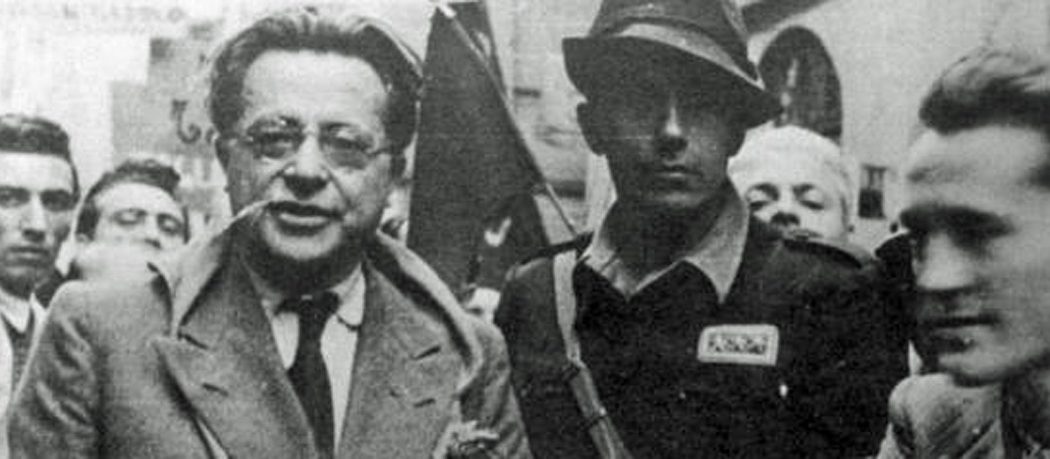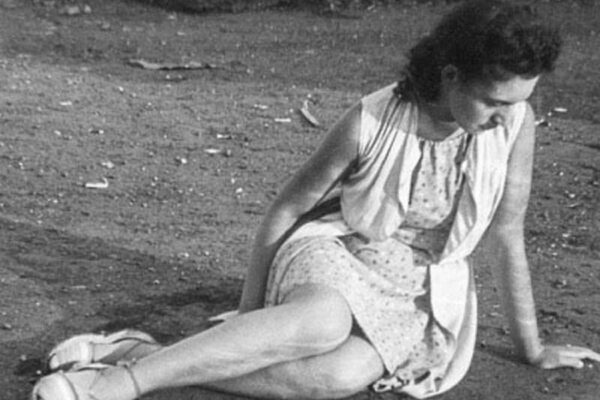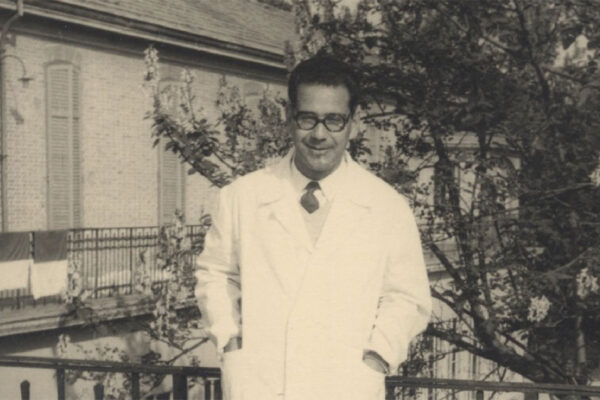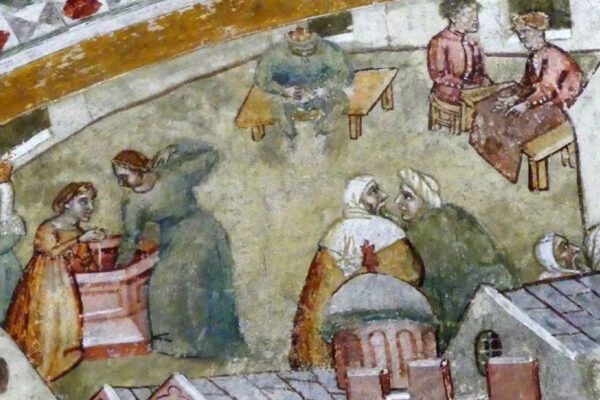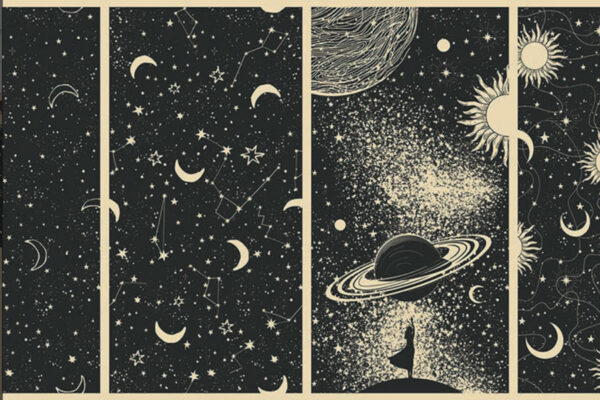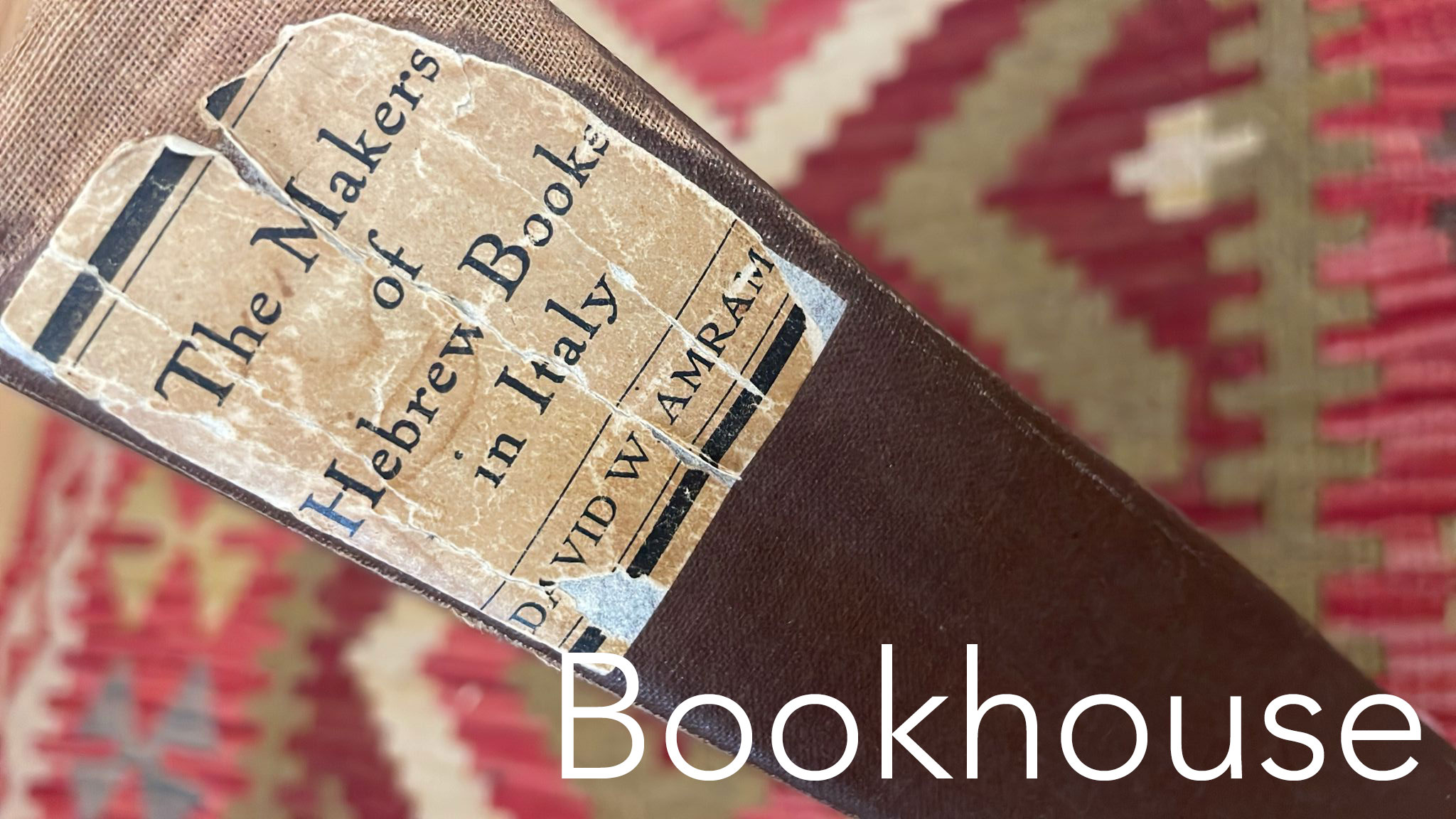History, Memory, and the Question of “Who Owns the Holocaust?”: Thoughts on Manuela Consonni’s L’eclisse dell’antifascismo
Michael Livingston is an internationally recognized scholar in the fields of taxation, comparative law, and legal history. At Rutgers, Professor Livingston teaches courses on Federal Income Taxation, Business Planning, Comparative Law, Law and the Holocaust, and Statutory Interpretation and Legislation, and serves as faculty advisor for the law school’s VITA (Volunteer Income Tax Assistance) and tax-exempt organization programs. In addition to Rutgers, he has taught at Cornell, Temple, and various foreign law schools, and served as a member of the comparative law commission of the Abilitazione Nazionale Scientifica (ASN), the Italian Government agency charged with the evaluation of new and continuing law professors.
Professor Livingston’s scholarship emphasizes comparative tax law and Law and the Holocaust, including the failure of law to prevent the Holocaust and its limited success in providing reparation to its victims. His book, “The Fascists and the Jews of Italy: Mussolini’s Race Laws, 1938-1943,” is the definitive English-language study of the Italian antisemitic laws. He has also supervised a comprehensive update of Cappelletti Merryman and Perillo’s treatise “The Italian Legal System;” written a highly regarded income tax casebook; and published articles in numerous journals, including the Yale, Texas, Cornell, Northwestern, and NYU Tax Law Reviews and the American Journal of Comparative Law. Professor Livingston is currently at work on two books, one on Tax and Culture and the second on Holocaust Law and Memory in the United States, Europe, and Israel.
Before arriving at Rutgers, Professor Livingston worked at Proskauer and Rose in New York City and the Joint Committee on Taxation of the U.S. Congress. In addition to his scholarly activities he writes fiction (primarily poetry and short stories) and served as an (unsuccessful) candidate for public office. He lives in Cheltenham with his wife, Anne Weiss, and has two adult children.
Publications
Among his publications are:
The Fascists and the Jews of Italy: Mussolini’s Race Laws, 1938-1941 (Cambridge)
Cappelletti Merryman and Perillo’s The Italian Legal System (2nd ed.) (with Francesco Parisi and Pier Giuseppe Monateri)
Criminal Law, Racial Law, Fascist Law: Was the Fascist Era Really a “Parenthesis” For the Italian Legal System? in Fascism and Criminal Law: History Theory Continuity (Stephen Skinner ed.), Oxford: Hart Publishing, 2014
The following are some not-quite-random thoughts inspired by Manuela Consonni’s new book, L’eclisse dell’antifasicsmo: Resistenza, questione politica, e cultura ebraica in Italia dal 1943 al 1989. Like most book reviews, they probably tell you more about the reviewer than about the book he is reviewing. Be patient: it will come back to the book, and what I regard as its principal subject, sooner or later.
The review begins with some general thoughts about history and memory; continues with an analysis of Consonni’s arguments regarding postwar Italy and the divergence of Italian and Jewish perspective; and moves from there to a discussion of Primo Levi’s role as understood by Consonni and other observers. I conclude with a few additional thoughts about history, memory and the meaning of the Holocaust for future generations.
- History, Memory, and the Italian Jews
The difference between history and memory is in theory a clear one but in practice difficult to describe. History is supposed to be a systematic record of events supported by written, or reliable oral, records. Memory is more fluid, and subject to constant revision according to the needs and fashions of different people at different times. Yet memory often precedes history, and historians themselves are subject to constant pressure to adjust their conclusions to meet the demands of changing perceptions and attitudes.
A case in point is the American Civil War. In the past century the war has gone from a conflict over slavery to a war to preserve the Union to once again a conflict over slavery, a difference in popular perceptions that is both cause and effect of changing historical fashions. Debates over the Confederate Flag and “Black Lives Matter” are in part political, but also reflect changing understandings of the Civil War and Reconstruction and, in turn, affect the questions that scholars ask about those periods and the answers they give to them. The perception of the French Revolution provides an equally dramatic example: according to Simon Schama, it took several decades before it was even called a Revolution, as opposed to a civil war (a la England in the 1600s) or a failed coup that was followed by a monarchical restoration. Almost any major historical event, from the Roman Empire to the Six Day War, may be observed to follow a similar pattern.
The line between history and memory is particularly blurry when it comes to the Holocaust. In Israel it tends to be seen as a uniquely Jewish tragedy that dramatizes the need for a Jewish State and (in the U.S.) for vigilance against totalitarian enemies. In Europe, by contrast, it tends to be seen as a human rights failure whose victims happened to be Jewish but could just as easily have been Christians, Muslims, or—to make the point even more poignantly—Palestinian Arabs. (The American view falls somewhere in between these extremes.) As in the Civil War or the French Revolution, the very definition of the event is itself at issue: should it be spelled with a capital or small “h,” does it include Jewish or also non-Jewish victims, and so forth.
Manuela Consonni’s book lies at the intersection of history and memory. While describing the various historical phases of postwar Italy, she also examines the memory of the Resistance and the Holocaust and the ways in which that memory has affected, and been affected by, postwar developments. At the root of her analysis is the tension between Jewish and Italian perceptions of the war, a difference which was to some degree muted by the postwar “antifascist” consensus but which has since come out into the open.
The figure of Primo Levi is central to Consonni’s analysis, as someone whose experience captured the uniqueness of the Jewish experience and whose writing brought it to a wider, global audience. Indeed, as I will argue, it is the presence of Levi that makes her book more than simply another history of postwar Italy, and one with important implications for the perception of the war and Holocaust generally. This is true both because of Levi’s uniquely Jewish experience and his focus on the moral ambiguity of the Holocaust, which makes the black and white approach to the Fascist era difficult to sustain.
- Periodization: Antifascism, Anticommunism, Antisemitism
The historical aspect of Consonni’s book emphasizes the post-1945 period. She divides postwar Italy into three periods, the first the immediate postwar era (roughly, 1945-1948), when memories of the war and Resistance remained fresh; the second from about 1948 to about 1967, when the antifascist paradigm remained dominant although challenged by various parties; and the third from 1967 to 1991, when the paradigm weakened and a new form of Holocaust memory, at least for Italian Jews, began to replace it. A fourth period, that beginning in 1991, is confined to a brief epilogue, since (in the author’s view) the antifascist paradigm no longer existed and the subject was accordingly exhausted.
The periodization above seems reasonable for the author’s purpose, but it must be noted that it reflects a very particular (primarily Jewish) perspective. My instinct is that, for most Italians, the late sixties or even the early seventies (when the compromesso storico between Christian Democrats and Communists took place) did not constitute a major breaking point in perceptions of the war or fascism as they perhaps did for Italian Jews, owing to both the Six Day and subsequent Yom Kippur Wars.
The above reflects a deeper tension within Consonni’s book: is she primarily interested in antifascism as such or its significance for the Jewish community, a small if sometimes influential portion of the population. Perhaps that is her point–that Jewish and Italian perceptions diverged at a certain point–but it is not clear that most Italians would have been aware of this divergence or that it was important to them. To appreciate this difference, one must turn back from history to memory.
- The Italian Resistance or The Jewish Holocaust?
The most interesting part of the book comes in the later chapters, when the antifascist consensus begins to fray and the difference between Jewish and broader Italian experiences becomes more widely accepted. This change was a matter of memory rather than history, but that does not make it any less significant.
The antifascist consensus was built around what some have called the Italian Resistance Myth and others, more broadly, have referred to as italiani brava gente—the myth of the so-called Good Italian. There has never been any serious doubt that it was just that: a myth. Study after study has demonstrated that the participation in the Resistance was quite low, and the level of collaboration quite high, even after the German occupation and the establishment of the RSI in 1943. Before that, from 1922 to the Spring of 1943, it was nearly universal.
While the Resistance Myth was by and large false, it is unquestionably true that people believed the myth, or at least pretended to, and that the postwar consensus (such as it was) was built around it. That is why the issue of the Jews, notwithstanding their small numbers, was so important. If the majority of Italians had not in fact opposed the racial laws before 1943, or rescued Jews thereafter, then the rest of the myth might be false, as well. The explosion of scholarship in the past two decades, demonstrating that the Race Laws were in fact enforced and that most Italians were indifferent or even supportive of them, was thus both cause and effect of the collapse of the postwar consensus: it would have been much more difficult to produce such studies in the immediate postwar years, or to find an audience if they were produced.
Consonni suggests that the Jewish and Italian interpretations of the war diverged with the fraying and subsequent collapse of the antifascist consensus in postwar Italy. My own view is that the two interpretations were fundamentally irreconcilable and it simply took some time for the difference to manifest itself. The idea that “we all suffered equally under fascism,” and the related idea that fascism turned seriously evil only with the German occupation—an idea captured beautifully by the rather synthetic word nazifascisti—were integral parts of the Resistance Myth and could not survive a more realistic examination of the era in question, any more than the notion that the North and South were both fighting for freedom could survive a serious examination of the American Civil War. The events of 1967 and 1991 unquestionably hastened this change, but they did not in my view cause it.
Because of the centrality of the Resistance Myth in modern Italy, the phenomenon above was especially dramatic in that country, but it is hardly limited to it. A similar phenomenon took place in France and, indeed, every country subject to wartime occupation, to some degree even in Germany itself. This accounts in no small part for the resentment directed at Israel and Jews even in some places (e.g., the Nordic countries) that were relatively friendly in the wartime period. (No one really likes a truth teller, even if people will sometimes pretend that they do.) Indeed, it does not seem an exaggeration to suggest that all of postwar Europe was constructed around a similar myth, the collapse of which is currently reverberating throughout the continent.
- Ethnicity, Ethics, and the Role of Primo Levi
Had Consonni limited herself to describing the events above, she would have written a useful but not especially original book. What makes her book fascinating is the way in which she weaves intellectual and other “high culture”–specifically, the life’s work of Primo Levi–into her analysis. Levi and his work are significant for the analysis in two ways, one ethnic and the other ethical in nature.
The ethnic impact of Levi’s work is perhaps the more obvious. Reading If This Be a Man or even The Periodic Table it becomes difficult or impossible to claim that the Jewish experience was no different than that of most Italians, or that it was simply an accident that the victims were Jews. However much the average Italian noticed this, a certain sector of opinion makers cannot have missed it, and that has unquestionably deep significance. That Levi describes his uniquely Jewish experience in recognizably Italian terms—the attempt to convey Dante to a non-Italian concentration camp inmate in If This Be a Man is the classic example—made this message especially effective.
The ethical impact of Levi is more subtle. The Resistance Myth requires a clear delineation of good and evil. By contrast Levi’s emphasis is on the zona grigia, the grey zone between good and evil in which he and most other survivors survived. By demonstrating the fuzziness of the line between good and evil, even for the victims themselves, Levi implicitly undercuts the moral as well as historical basis for the Resistance and indeed all historical myths, not excluding those of his own people. This is, I suspect, why his work has outlasted that of so many Holocaust authors who are unwilling or incapable of recognizing this reality, even when they come from places that suffered far larger losses than the Italian Jews. On a somewhat more painful level, it may account for the difficulties Levi had with non-Italian (and especially Jewish) audiences in his later years: Jews no less than other peoples want their own moral and historical certainty, and Levi of all people was not willing to give it to them.
- Conclusion: Whose Holocaust Is It?
L’eclisse dell’antifascismo is, then, not so much a book about the collapse of an Italian political consensus as the disintegration of a national myth which was useful for a period but ultimately not consistent with the historical facts. In this respect, the Resistance Myth is something like the mythologized versions of the American Civil War or, for that matter, the idealized version of Israel (or any other country’s) origins: something that is useful to teach in schools or celebrate on national holidays but should be recognized as a myth rather than a serious historical analysis. To put the matter more pithily, history and memory are two different things, but the former has a tendency to catch up with the latter, and when there is too much distance between the two the resulting mix is likely to be unstable.
It would have been interesting to see Consonni extend her analysis beyond 1991. With the collapse of the Soviet Empire, Europe has gained a greater historical perspective on the Fascist period, recognizing the many “grey zones” of that era rather than seeing it as a simple struggle between good and evil. It now faces the danger of going too far in the other direction, becoming so “balanced” in its perspective that it fails to see any difference between good and evil, at all. In this it resembles the United States of the middle twentieth century, which went so far in welcoming the South back to the Union that it refused to recognize the evil of slavery, at all. The museums in Eastern Europe, which celebrate the perpetrators of the Holocaust at the same time that they mourn its victims, are a particularly egregious but not entirely unique case in point.
We cannot know how Levi would have responded to these events. We may surmise that he would have been distinctly unenthusiastic about resurgent nationalism in Italy, the other European countries, or Israel itself. We may assume that he would continue to be skeptical about people, including other survivors, who asserted their own absolute goodness and the absolute evil of their adversaries. It is a reasonable guess that he would continue to have been witty and irreverent and refused to take anyone, including himself, too seriously. Beyond this we cannot say.But Professor Consonni has at least made us think about these and similar issues, and for that we owe her a great debt.


